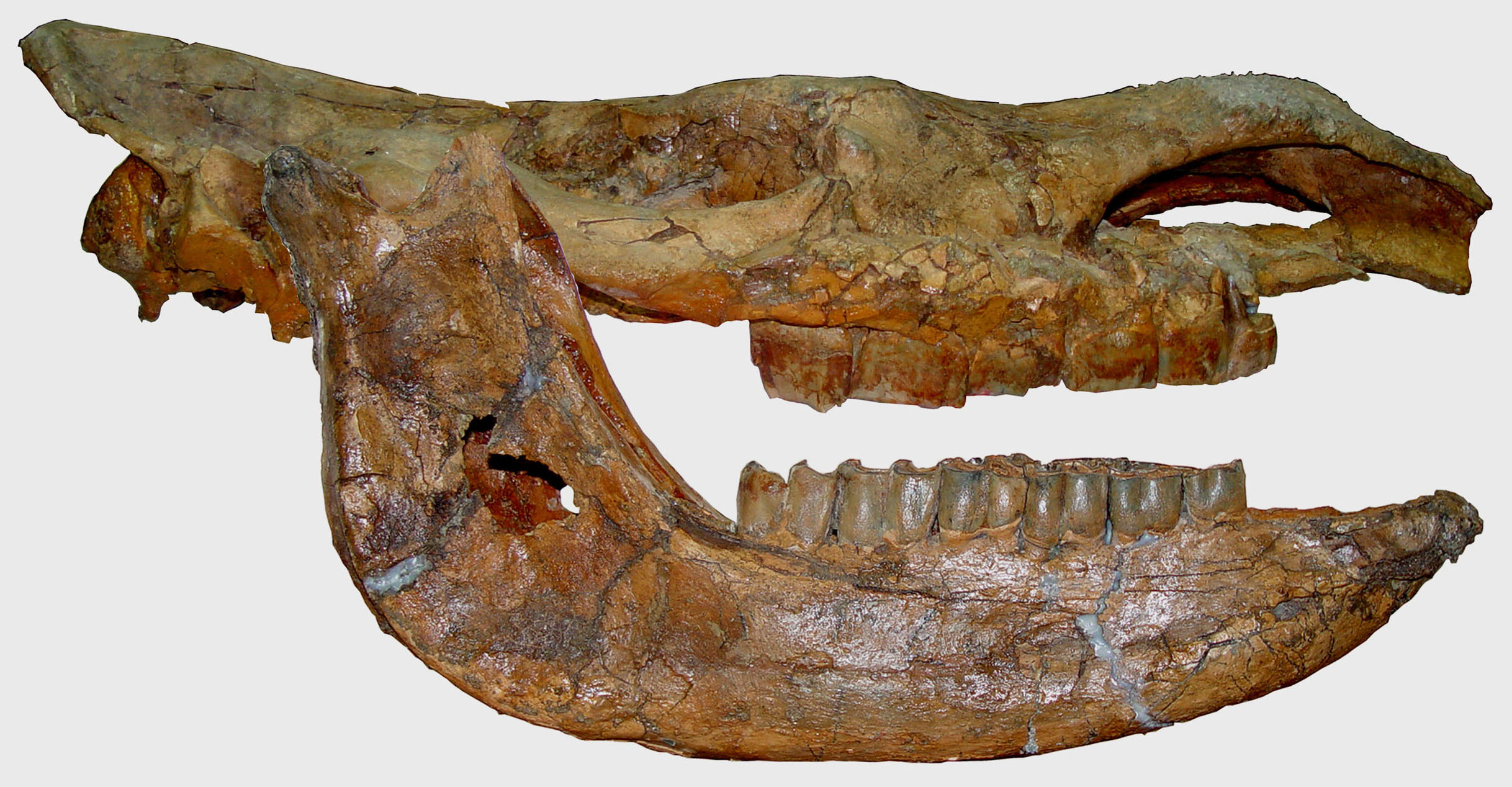A new oldest woolly rhino fossil in Tibet suggests some giant mammals evolved there before the beginning of the Ice Age, but it leaves a lot of questions about where these giants came from and how they acquired their adaptations for life in a cold environment.
A team of geologists and paleontologists led by Xiaoming Wang from the Natural History Museum of Los Angeles County (NHM) and Qiang Li of Institute of Vertebrate Paleontology and Paleoanthropology, Chinese Academy of Sciences, uncovered a complete skull and lower jaw of a new species of woolly rhino (Coelodonta thibetana) in the foothills of the Himalayas at the southwestern Tibetan Plateau.
The new rhino is 3.6 million years old (middle Pliocene), much older and more primitive than its Ice Age (Pleistocene) descendants in the mammoth steppes across much of Europe and Asia.
The extinct animal had special adaptations for sweeping snow, using its flattened horn to reveal vegetation, a useful behavior for survival in the harsh Tibetan climate.

Skull and lower jaw of the extinct Tibetan woolly rhino, Coelodonta thibetana. Credit: Deng Tao
The rhinos lived at a time when global climate was much warmer and the northern continents were free of the massive ice sheets seen in the later Ice Age. The rhino grew accustomed to cold conditions in high elevations, and became "pre-adapted" for the future Ice Age climate. When the Ice Age eventually arrived, the cold-loving rhinos simply descended from the high mountains and began to expand throughout northern Asia and Europe.
In addition to the new woolly rhino, the paleontologists uncovered extinct species of three-toed horse (Hipparion), Tibetan bharal (Pseudois, also known as blue sheep), chiru (Pantholops, also known as Tibetan antelope), snow leopard (Uncia), badger (Meles), as well as 23 other kinds of mammals.
The fossil assemblage from Tibet offers new insights into the origin of the cold-adapted Pleistocene megafauna, which has usually been sought in arctic tundra or in cold steppes elsewhere.
The new evidence sets up an alternative scenario: the harsh winters of the rising Tibetan Plateau may have provided the initial step toward cold-adaptation for several successful members of the late Pleistocene mammoth fauna in Europe, Asia, and to a lesser extent, North America. The Tibetan Plateau may have been another cradle of the Ice Age giants.
Support for the research was provided by the National Science Foundation, Chinese National Natural Science Foundation, Chinese Academy of Sciences and National Geographic Society.


